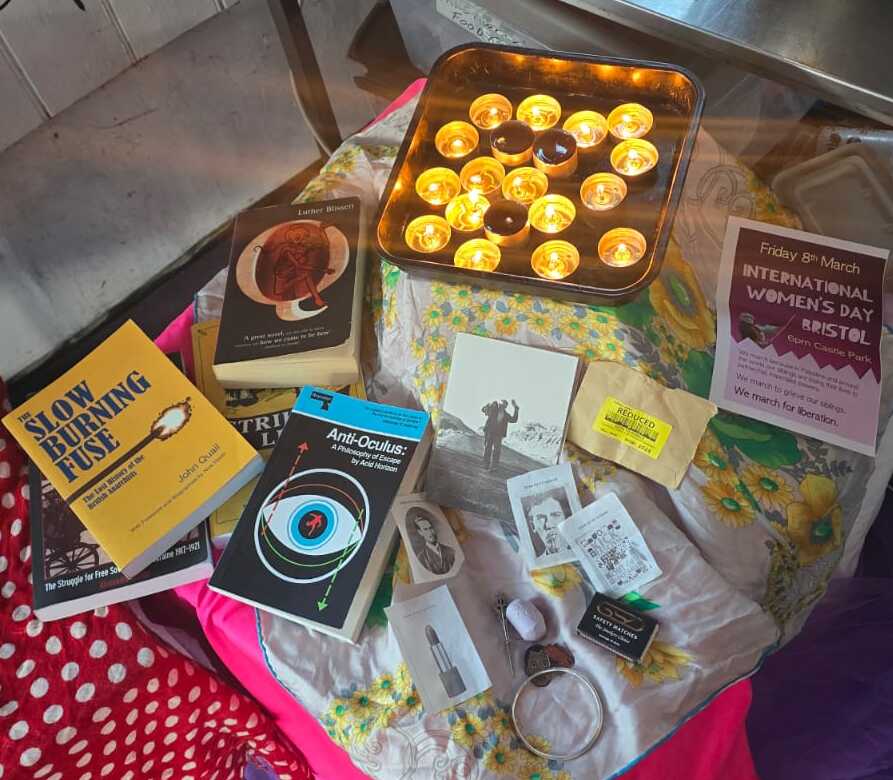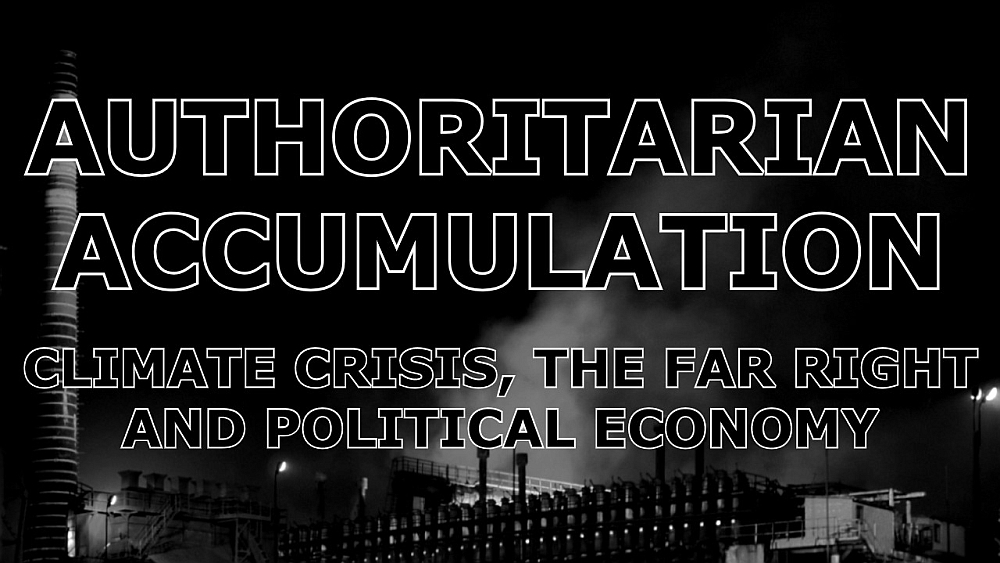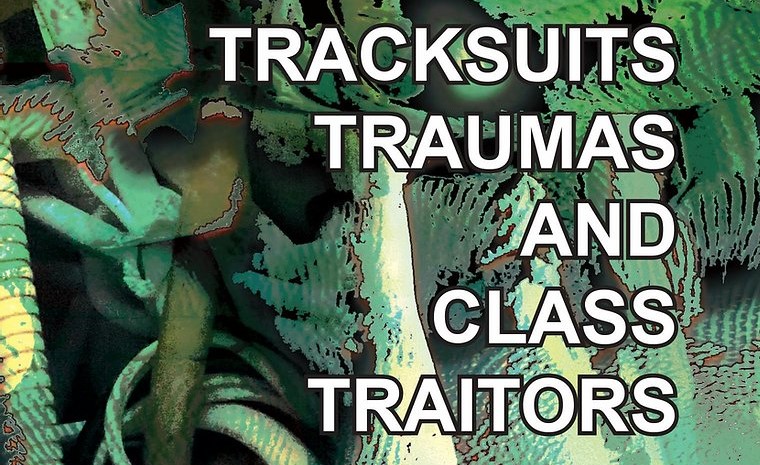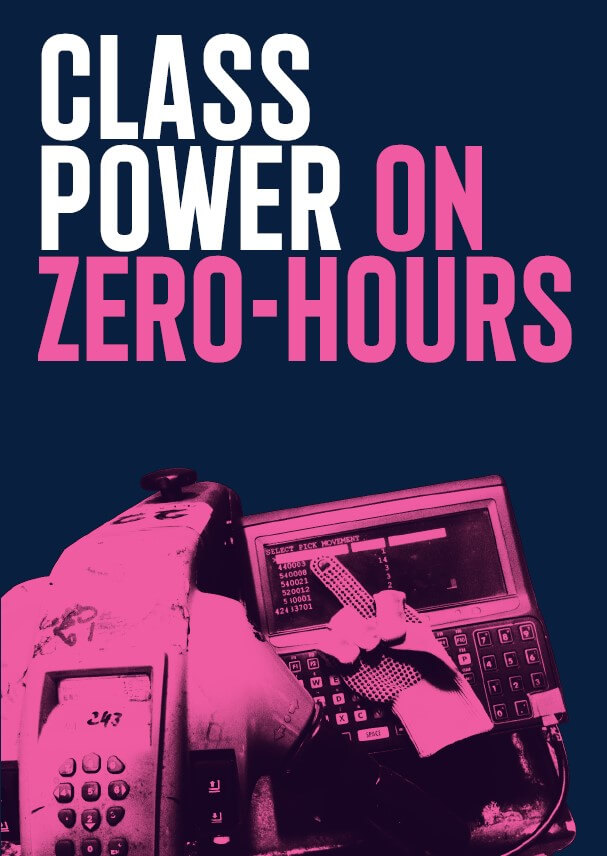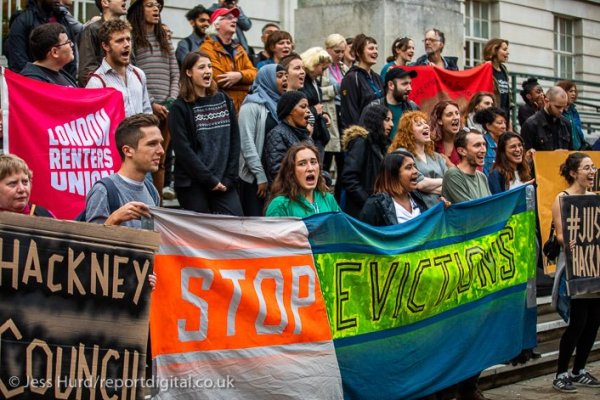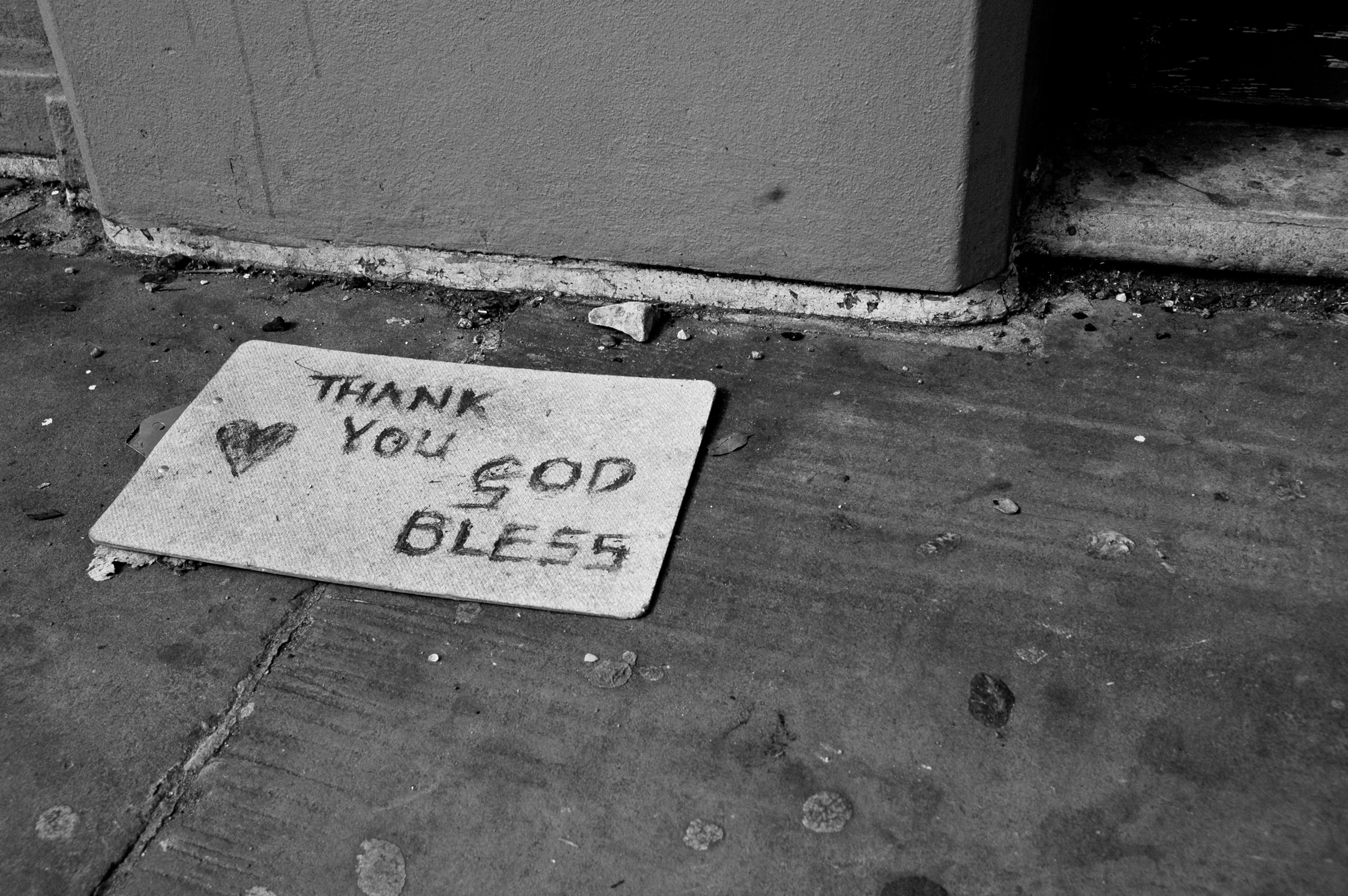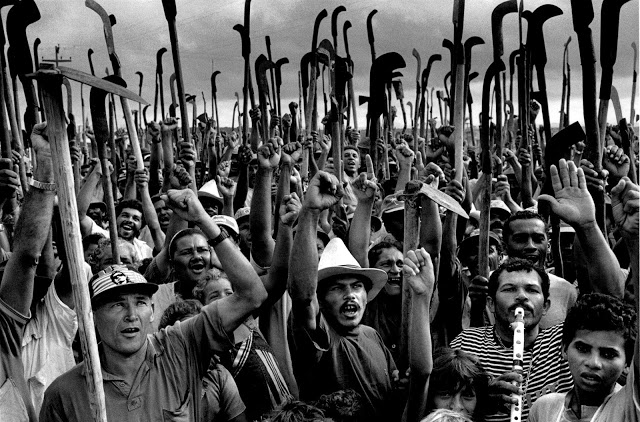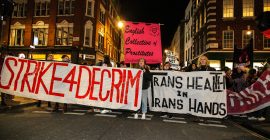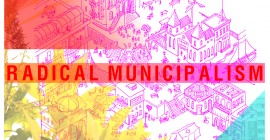Introduction
On March 1-3, Plan C met at the anarchist social space BASE in Bristol for a long overdue in-person meeting. In previous months, we had set up a next-phase group inviting Plan C members to commit to collectively work as an organisation, to discuss new political terrains thrown up by the post-lockdown world and to find new insights that could plan a route forward. The lead up to this gathering was three months of self-reflection, evaluation and bi-weekly discussions on the current situation we are all facing – the accelerating and converging crises being driven by capital accumulation and state control, and fundamentally, our collective inability as movements (broadly defined) to confront power.
But first, WTF is up with Plan C, where have you been and why do you still exist? Some answers below!
What’s been happening?
We embarked on a project to re-evaluate what we’re doing way back in 2020, as a political cycle ended with the defeat of Corbyn in Dec 2019. The Corbyn project had produced a series of shifts and changes across the movements that preceded it, which Plan C was not immune to. It’s important to both recognise that for some in Plan C, Corbynism was an exceptional event that required political involvement which meant leaving Plan C to focus on that, whilst others saw the importance of continuing to build extra-parliamentary alternatives as necessary based on either a Corbyn victory or defeat. As the lockdown set in and we were forced into the online land of Zoom, we started a project of refounding Plan C. On paper there were around 180 members, and around 250 applications for membership that had been backed up over some time. At that point we decided to close membership and dissolve our structures to allow us to focus on the refoundation.
We started a long and detailed process of 1-to-1 chats with everyone to see if they would like to join on the basis that we were refounding and not organising. Some members had been dormant for a while, others had priorities changed and were involved in other things, so we ended up with around 100 comrades who wanted to be involved. We set about placing everyone into “revolutionary bubbles”, as we called them, consisting of 6-8 people, with a mix of genders, age, experience and geography. These were to be online affinity groups that would also function as support groups and consciousness-raising spaces, as well as being reading and discussion groups tasked with answering a series of questions. The impact of the pandemic and the confusion and fear that existed made it important to keep personal experiences very central to discussions which collectively developed over a period of three months. This was all in the context of that strange lockdown moment of our history where there was a rise in state control and the repressive policing movements and protests, as well as the ongoing crash of the austerity decade into privatisation and the dismantling of public services such as healthcare. Alongside this came the dissolution of many revolutionary and autonomous structures and collectives that were lost or severely disrupted by the traumas of lockdown and the uncertainties of the future.
A lot was learned from our discussions with each other – who we were, what motivated us, how us, friends, and families were experiencing living under capitalism, who we were ‘organising’, and what the assumptions we had inherited were and what we needed to re-evaluate. This led to a two-day online-zoom conference featuring creative presentations, videos and animations, discussions and affirmations, all of which produced a collective map of converging points and what we called ‘creative tensions’ – seemingly antagonistic binary concepts that speak to each other and produced new ways of thinking about the problems we were facing. These were things like “mobilising vs organising”, “care vs structure “, and the experimental vs strategic”. The refoundation process was halted in the summer of 2021, as the lockdown took its toll on each of us, and personal tragedies meant priorities had ultimately had to shift.
The last couple of years
In the last years, as many organisations similar to us, we have been reconstituting ourselves and reorienting ourselves to respond to the post-lockdown conditions, climate crisis, rise in inflation, war and the particular challenges for self-organised, as we see the rise in paid activism.
The pandemic demonstrated increased levels of emergency and acceleration of climate crisis, care crisis and the authoritarian turn of the State. Plan C members continued organising within climate struggles at a time when COP26 was being hosted in Glasgow during the winter of 2021. This moment represented a point of intervention in the climate movement in Britain, with attempts to explore alternative strategies. This period of focus on climate struggles culminated with an in-person convergence in early 2022: Beyond the End of the World at Pelican House, with 150 comrades attending, from Plan C members and ‘friends of Plan C’ to comrades from across Europe. This was a movement space, enabling comrades to come together and reflect on how we radically transform the way our lives and societies are organised. Some of the questions that guided us through the convergence were: What does this future look like and how do we get there? Where are the fault lines in the crises that we can crack open? Where are the overlaps of struggles that we can strengthen? How do we steer away from defeatist, nationalist, racist and even authoritarian responses? All of these questions were focused on the broader horizon raised by asking ourselves how we can collectively transcend the end of the world?
In the summer of 2022, some of us were involved in setting up a new campaign responding to the financial meltdown and inflation called Don’t Pay. At its heart this was a proposal to refuse to pay energy bills and to develop a counter narrative to government discourse blaming the Ukrainian war and other external factors. We will write more on our reflections, learnings and challenges setting up Don’t Pay, but it was a great experiment, testing out how to build counter-narratives and collective power responding to crises. We understood this campaign as part of a movement whose appeal reached far beyond the tiny groups like Plan C and which, for a moment, inspired millions of ‘ordinary’ people in Britain to civil disobedience in an act of refusal to pay for their crisis. Don’t Pay also had an important international impact and spawned similar campaigns in Italy, Germany, Belgium, France and as far away as Sri Lanka.
With the turn to workplace struggles of 2022, we also came back to the Plan C tradition of thinking about the potential of strikes and strikes as leverage. Many of us have been involved in trade union disputes and radicalising our unions during the past years, and we continued to discuss rank & file power and workplace struggles in spaces such as the Strike Wave Assembly in London. This was a series of open meetings for striking workers and supporters to discuss tensions within rank & file directions and top-level strategy in the main national unions, to discuss strategies for escalation of disputes and effective tactics. This was also a space to invite groups and collectives to get involved in workplace struggles beyond attending pickets, effectively gathering resources, knowledge and examples of militant actions that could be replicated. The StrikeWave Assembly was a good test for micro-level politics, focusing on how to build the power of local disputes. As “hot strike summer” moved into the following years moved into “shit deal spring”, we lost momentum and did not replicate it nationally as originally planned. However we did raise political awareness of the potential of a radical workers movement. We did this by taking 60 trade unionists to the French uprisings for a transnational meeting. Finally, across the past two years we have continued to deepen our commitment to transnational responses, continuing our work in the Transnational Social Strike Platform, attending in person meetings in Sofia, Frankfurt and Bologna.
It’s important for us to state that we never stopped as members of Plan C. We were heavily involved in Don’t Pay’ in defending those being repressed in Bristol after the ‘Kill The Bill’ police riots, in co-op building infrastructure projects in Birmingham, in the Kurdish Freedom Movement, in Workers for a free Palestine (WFFP) and supporting Palestinian liberation struggles, our ongoing Care & Justice work, in anti-war networks like the Permanent Assembly against War. As a self-funded organisation that is run entirely from our members’ subs, we have also supported other groups, campaigns, political spaces with funding. Plan C, and the people that have been involved, has made a major contribution on how movements do politics. The discussions that have converged in Plan C – ranging across Luxury Communism, Social Reproduction, Assemblies, Anti-Fascism, Social Strike, Women’s Strike, Care & Justice, Consciousness Raising, Acid Communism and Transnational organising – cut against the grain of a dogmatic, statist left unable to break themselves from the ossified methods and political assumptions of the past. All of this work has led us into a period of consolidation, of re-evaluation and critical thinking. After everything we’ve experienced, the necessity and value of maintaining a distinct political organisation that is not afraid to experiment, that cares for each other, that treats each other not as expedient political actors but friends, is something we see as vital to continue.
REPORT OF THE BRISTOL MEETING
The gathering took place over two days. The first day was focused on discussion that would enable us to place ourselves in the contemporary context. The second day, mainly a morning session, was focused on internal organisational questions of what we do next. The following focuses on the discussions from the first day as they are broadly relevant to a wide audience of interested parties.
SESSION I: MOVEMENT(S) OF STATE AND CAPITAL
We started our discussions by attempting to make sense of our varying experiences of the alarming and accelerating deterioration of living conditions that results from the multiple crises of state and capital in all spheres of our lives. To situate this discussion in our everyday reality, we first shared our own individual experiences of capital and state violence: from the continuing struggle in housing, to workplace relationships and the lack of a welfare safety net with and the effects it has on mental health. As expected, many of us have very precarious housing conditions. Exorbitant rents and insecure tenancies mean many of us are having to move all the time, affecting relationships with other people and capacity to organise. There is definitely a generational divide, one example being the concerns about our kids’ future, another being issues of individualism, fragmentation and isolation that are particularly alarming in relation to the care needs of older people who do not live in nuclear family settings out of choice or even due to factors they didn’t choose. Others are witnessing extreme violence and trauma whilst teaching in schools with pupils who are experiencing systemic poverty, domestic violence and antisocial crime. We need to start thinking a bit more about care and community, and how to build a conceptual framework and potential practice that disentangles the notion of care from that of the family, any type of family, including chosen families and non-nuclear ones. This is because people’s care needs should stop depending on either having a biological family or the skills to build an alternative to it.
Most of us are experiencing deteriorating working conditions. Culture wars and the commodification of higher education has led to the dismissal of those engaged in ‘critical’ research and teaching, often wiping out entire departments and ‘free education’ spaces. Others experience a corporate ethos taking over even in grassroot charities. Then there is unemployment, precarity, patchworks and the lowering of wages. Some are supporting partners experiencing the violence of borders. Inevitably our health and well-being are suffering, with many experiencing fears, insecurities and anxiety over our conditions of life, the lack of a social safety net and climate crisis. The cannibalising of the state safety net makes getting sick really dangerous. Some have witnessed mental health issues escalate into domestic violence and murder because of austerity wiping out the ability to collectively organise care amongst comrades. Pushed into a survival mindset it is harder and harder to hope or plan for a decent life.
We then began to map out what we see as the characterising features of contemporary capitalism and state power, by moving from the particular individual to the general social world and asking ourselves: What are we up against? How do we understand accumulation or see it happening? Where is power located? What is the role of the State? How can we relate to each other? Who is the revolutionary subject? Who is the ’we’? What are the choke points, and do they exist i.e. are there critical points in the infrastructure of capital that can be disrupted strategically? We had focused on a few areas to explore with a historical retracing of when these changes occurred, so as to deepen our understanding on the movements of state and capital in this current period. These were – neoliberalism and the impotence of social democracy, financialisation, expropriation, dehumanisation, the rise of individualism, hyper commodification, the global police state, capitalist realism, the new movements of the digital revolution in the form of AI and the shrinking of the commons.
Neoliberalism: Capital fights back against rising worker power
Neoliberalism began in the 1970s in Chile with the economic shock doctrine of the US backed fascist General Pinochet, then moved into its ‘democratic’ incarnation to Britain and the US in the 1980s with privatisation and the marketisation of social goods such as transport, health and social care, education, housing, utilities and green spaces. Its political objective was to smash organised labour. Most of these goods in Britain are now totally privatised and run in the interest of private shareholders. De-industrialisation in the global north went hand in hand with financialization as the new mode of capital accumulation. In financialisation, the production of commodities is not the main site of capital accumulation, instead lending and debt become increasingly important, with the rise of fictitious capital producing so called ‘returns on investment’. Freed from state regulations, and with increasing shareholder investment opportunities created by the privatisation of social goods, the economic system now runs on a debt bubble, with the capitalist elite making unprecedented wealth, and the majority of people being tied into debt to make up for falling wage shares. As the 2007-8 financial crisis showed, this debt bubble is a ticking time bomb. Importantly, debt fuels the expropriation of people. That was the dominant post-colonial bondage of the ‘west’ over the global south, producing what has been called ‘neo-colonialism’. As debt bondage spreads via the process of financialisation it becomes a form of internal colonisation in western economies. With no claims to social goods and weakened workers rights, more and more people are increasingly expropriated as well as exploited.
We can feel and see that things have accelerated. We experience the immediacy of how events seem to appear and disappear; the constant feeling that things are getting worse and quicker, whilst not really knowing what has happened. When we talk about movements of capital, where and why has it moved? There is a generalised state of confusion, of seeing but not knowing. One thing has become clear – that much of our social wealth is being systematically expropriated in front of our eyes by the transnational capitalist class, and amassed in fewer and fewer hands.
Meanwhile, the privatisation of social goods and the continued commodification of more spheres of our lives, including care, well-being and food production, means that we continue to borrow more. The end of the family wage, supposedly aimed at women’s liberation, has resulted in the adult worker model, which means that every single adult irrespective of their caring responsibilities has no choice but to engage in wage slavery. This fuels the privatisation of social care, debt, the expropriation of poor, black and migrant women, and robs us all of time to care for others or engage in movements of autonomy and liberation. The expropriated have no time to do this as they need to work all the time, paid and unpaid, in order to make ends meet. These are the unpaid carers, the precarious gig workers on zero hour contracts or semi self-employed contracts, the essential workers, the sex workers, the unpaid single mothers, the prisoner workers, the sick and disabled that are forced to engage in low paid work, all of whom disproportionately involve migrants and refugees.
The neoliberal project was to socially engineer society in the image of the private consumer, the individual, which in the eyes of free market ideology supposedly unlocks the true potential of the ideal of freedom. Instead of liberating the individual, however, it has unleashed an absurd marketisation on all social life, that has sought to mediate all social relationships – from work to love – via market imperatives. The shift to base society on the ‘free’ individual went hand in hand with the collapse of collective social power within long established communities and the weakening of organised movements of workers by waves of austerity, managed decline and state violence aimed at smashing opposition to the new wave of the post-social democratic regime of exploitation. We can see how capital conditions the process of keeping us as isolated individuals, in constant competition with each other, continually tracking, assessing, measuring, monitoring and imposing a regime of internalised self-optimisation that further produces a rise of anxiety, alienation and illness that has led to a record use of antianxiety and antidepressant drugs. Thatcher famously declared that “there is no such thing as society, there are individual men and women and there are families”. This rallying cry for a project against the inefficient state control of industry has produced a society vastly more regulated by an authoritarian state with declining social benefits for the huge majority of us.
According to neoliberal logic everyone has the choice and power to compete in the free market society and better themselves. And if they stay poor, they only have themselves to blame. Within this context, the rise of self-care for mind and body became the new mantra to cope with the lived reality. The wellness industry, which again increases our debt, and reduces the time we devote to collective struggle, is a symptom of this deeper process of social re-engineering. The idea that autonomy is relational, that you can only be well by engaging in collective care, and that you can only achieve change through collective agency has lost much power. This poses particular issues for organising, as words like ‘commitment’ have become unpopular amongst many. This individualism is toxic, particularly as it interacts with ‘capitalist realism’, the widespread idea that there is no alternative to capitalism, another neoliberal achievement which went alongside the destruction of militant union power. People feel powerless and isolated, they lose hope and trust and all that remains is to blame the ‘other’, whether that is the so-called ‘workshy’ benefit claimants or asylum seekers – anyone who has been so immiserated that they are dependent on the state to keep them and their children alive. This toxic individualisation serves far right populist ideologies.
At the same time, without any control over global financialised capital, the state’s role is increasingly to channel tax money to the wealthy, in the form of housing benefits to private landlords, child tax credits to corporations investing in social and child care, social funding to private prisons and detention, health funding to pharma companies, prison and detention corporations, and utility costs to energy and gas companies. The state is now an increasingly repressive apparatus whose role is to contain the mass of expropriated people, increase surveillance and control of anger and protest. In so doing it legitimises de-humanisation as an inevitable tragedy, during pandemics and genocides, but also in “normal” times, when the withdrawal of disability benefits result in thousands of deaths, and homelessness means facing extreme physical and sexual violence. This also lies behind the turn of the State towards authoritarianism and the rise of fascism. It makes little difference to take on the state government as financial powers have control over national governments . We have seen this in the failed social democratic experiences in Spain and Greece and it’s an illusion to believe that we are going to get some stuff ‘back’ from the State.
All of these tendencies are enabled by new fields for the accumulation of capital, from AI and digitalisation and big data – which can be understood as a new industrial revolution – to the climate crisis and its false solutions, new green technologies, or oil companies and their renewal wings. These are now prime sites of capital accumulation, undermining workers’ rights and increasing border restrictions.
We ended this discussion by realising how important it is for our movements to grasp this new logic of capital and how difficult that is. We face a world that is deliberately confusing and confounding any attempt to see clearly what is happening. In the face of this society of confusion we felt it important to ask some key questions: How do we disrupt the flow of capital? How do we counterattack? And who are we talking about when we use that word ‘we’?
SESSION 2: MOVEMENTS OF AUTONOMY AND LIBERATION
If the morning had been spent trying to track the changes in the world and the strategies of capital, with all the traumas and trials it reveals, the afternoon focused on where resistance can be found and developed. These are the movements of autonomy and liberation, the strategies and tactics to resist and push back the project of capital and state power? What are the limits and boundaries of confronting power? What is the horizon we imagine we can head for ? Why, with the huge amount of outrage fuelled by an ever more aware society, are we unable to confront power? What limits us collectively? This is, in many ways, our own attempt to address the old question of “what is to be done?”, who are the new revolutionary subjects? Who is that ‘we’ that we are when we resist?
After an opening activity that let us feel the importance of placing ourselves within revolutionary traditions and in relation to a variety of legacies from which to be inspired by, we focused on discussing the question of a revolutionary subject. In the past decades of resistance we have seen a rupture with the tendency to search for a universal revolutionary subject. It is our understanding that revolutionary movements need to disentangle what is dogmatic and what is useful in this outdated conception of creating a revolutionary subject, while at the same time not letting go of the necessity to create revolutionary consciousness as an awareness of the necessity of overcoming capitalism and the confrontation with power. In our understanding, there is a need to start looking at what collective subjects – the various ways in which people feel part of a ‘we’ – are possible within current tendencies.
As we see multiple subjects that are created by current conditions, we also see how these plural subjectivities create different ways of struggling that need to be recognised. Nevertheless, the horizon that movements of resistance and autonomy are struggling for is very dispersed, does not have any obvious cohesion and is taking place at all sorts of levels and in all sorts of social fields. It is necessary to start thinking about how we relate to each other and start building our relationship to common horizons. It is not an either-or tension between universality and identity struggles, something that can be seen, for example, in anti-border queer organising: an interesting experience of joining specificities together, connecting struggles without reducing one into the other.
Maybe the question then is how do we organise towards liberation? When many people don’t have a way of living that produces freedom or liberation and most of us live with contradictions, it might seem that our struggles are reduced. Even if this were so, we can develop a narrative of a better place through practice: experiences of mutual aid, of reclaiming the commons, of being part of something bigger and through that process seeing that it is possible to achieve another world. We are clear that it is necessary to mobilise our collective power to disrupt the accumulation of power by capital. In recent experiences we have seen that despite the aggression of the State and capital, the pulse of resistance is still present and clearly visible. One of the tactics that seems to be winning or more effective is the strike in its expansive sense, as in political strikes, strikes of consumption, strikes of unpaid work as well as strikes of production. As we attempt to experiment in new ways to unlock collective power, we want to continue understanding what are the choke points of capital? How do we move from short term disruptive actions into transformational events? How can we build power from below? How can we build a vision of a liberated society that is possible to achieve?
GET INVOLVED
We will be holding our next in-person Plan C Weekender on July 5th-7th, If you want to help us on this journey and find answers to these big questions, then you’re welcome to get in touch with us at info@weareplanc.org

